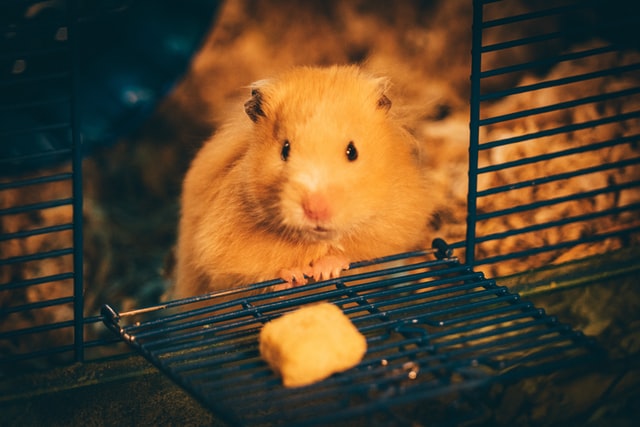This is a question that every hamster owner has, and I remember having it when I first got Teddy. I’m not sure how I’m going to get it clean. Is it necessary for me to clean it up after myself all the couple of days? I eventually worked out how many to clean Teddy’s cage, thanks to some advice from other hamster parents. And I figured out how to use it quietly enough that he won’t be surprised when I reintroduce him to his old cage.
Table of Contents
Maintaining the hamster cage is just a straightforward process
To keep your hamster healthy and comfortable, keep their environment clean, just like you would with any other pet. To keep things fresh, there are daily, weekly, and monthly maintenance regimens.
Per Day Cleaning
Every day, remove any filthy bedding. Because hamsters urinate inside one or two distinct corners of their home, scrape away any damp bedding then replace it along with fresh bedding every day. This task can be aided using a small animal scoop. Food dishes and water bottles should be cleaned on a regular basis. Your pet, just like us, would like clean dishes. Cleaning containers are a must keeping your pet healthy and reducing the risk of food and water contamination.
Weekly Clean up
Once a week, change your bedding. Plan to replace all of the bedding within your hamster’s habitat weekly, aside from scooping out filthy bedding every day. Once a month, thoroughly clean the habitat. At least once a month, your hamster’s environment should be properly cleaned. While you’re doing a deep clean, put the hamster in a secure, temporary environment like a critter carrier.
This will entail clearing out any detritus and hand-washing the habitat, hideaways, accessories, and hard toys in tepid, soapy water, taking extra care to avoid any ammonia-based products. Consider using a specific habitat cleaning spray to assure you’re washing a pet’s stuff with a safe product. Then, after carefully rinsing the environment with water to eliminate any residue, allow it to dry completely before replacing the bedding.
How Often Should My Hamster’s Cage Be Cleaned?
You’ll have to make a decision based on all of these factors, but homeowners of only one hamster must clean out the cages once a week as a general rule.
You’ll need to wash out your cage more frequently as your hamster population grows. Although this may appear to be a simple task, many pet owners overlook the fact that more animals you have, more the waste products will accumulate in your pet’s cage.
How often you should clean a cage is governed by just how quickly it acquires dirt. A procedure called as spot cleaning has proven successful for several business owners. Cleaning areas that you notice are dirty can not only minimize stink, but it may also decrease the occurrence with which you will need to wash the complete cage. If the scent bothers you, you should clean out the hamster more frequently than once a week. If you have numerous hamsters, you may notice that a stench develops quickly then over a short amount of time, necessitating more frequent cage cleanings.
A Hamster’s Cage Is Cleaned Every Day
- Let’s take a look at the cleaning schedule that every hamster owner should follow. First and foremost, this is something you must do every day
- Examine the cage for any problems.
- Remove any apparent debris, including such chewed toys or food fragments.
- Replace any damp or filthy bedding with new, dry bedding. Clean its litter daily if a hamster uses a simple litter box, just like you would a cat’s cat box.
- This should only take a few minutes and will ensure that the cage is odor-free.
A Hamster’s Cage Is Clean Every Week
You should take the hamster out from the cage once a week to clean it thoroughly. Step-by-step instructions are provided below.
- The Hamster must be removed
Before cleaning the cage, make sure the hamster is totally removed. While you’re cleaning, you can put your hamster companion inside an exercise ball or a different cage or bin.
- Everything should be taken out of the crate.
Old blankets, toys, exercise stations, a food dish, and the water bottle all need to be removed from the cage. To avoid odour, dispose of old bedding in a sealed bag. Any food or water that hasn’t been consumed should be discarded.
- Items to be cleaned are
To get clear of any potential bacteria, everything within the cage needs to be thoroughly washed. These objects must be washed both inside and outside the cage, and they must be fully rinsed and dried before being reintroduced. If your hamster runs around in a complex tube system disassemble as well as clean this as needed. Pulling them apart and reassembling them once per month would be too much for these.
- It’s Time to Clean Up the Cage
Despite the fact that the bedding as well as litter covered the majority of the cage, it still has to be cleaned. Scrape off any bedding or litter that has clung to the cage’s floor or bars, or soak them in hot soapy water. If cage bars were present, cleaning them is also a good idea. The cage can be swabbed with a dry towel to speed up the drying process or placed outside to dry naturally.
- Replace all of the items
Before re-entering the cage, make sure that all of the items that belong there are dry. Fresh bedding, litter, as well as any fresh water should all be provided. Your hamster pal should only be brought back inside after everything has been set up. Other aspects of cage cleaning, such as the sort of soap to use also type of cages to purchase, may remain unclear.
